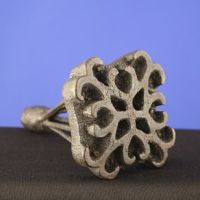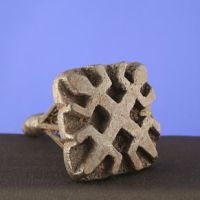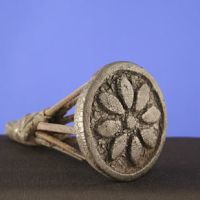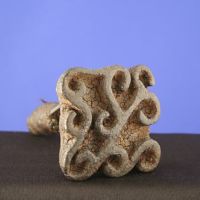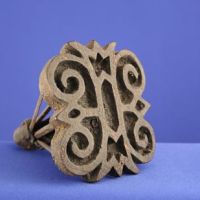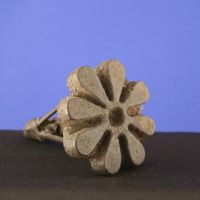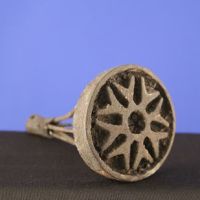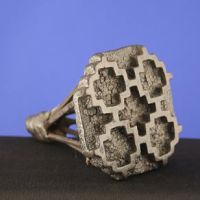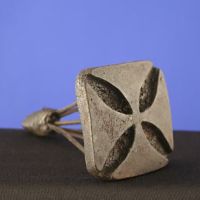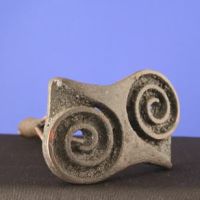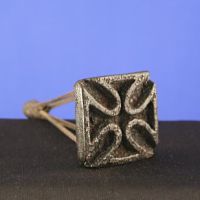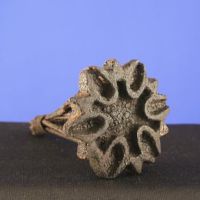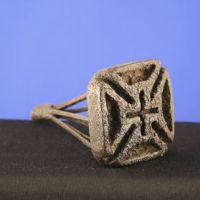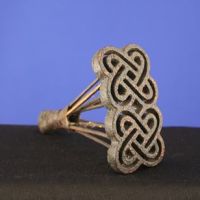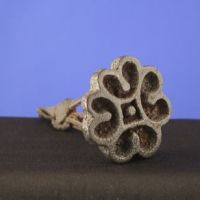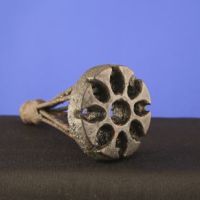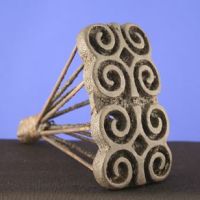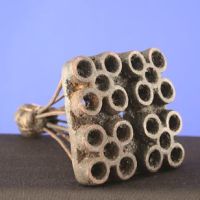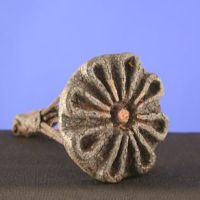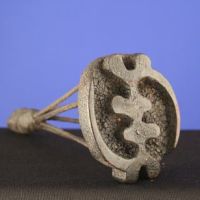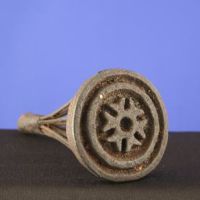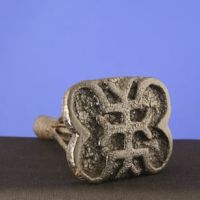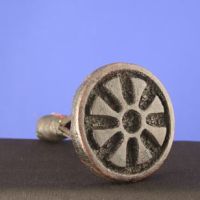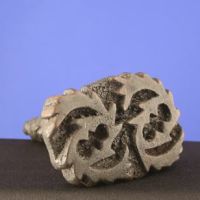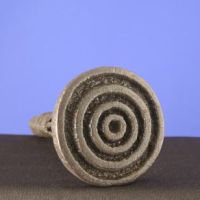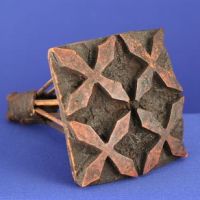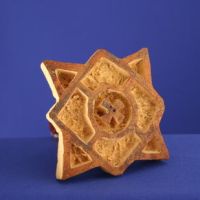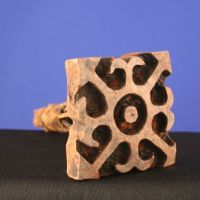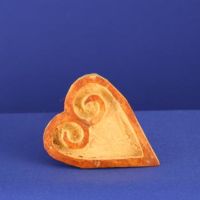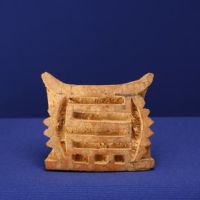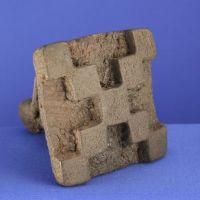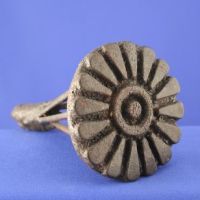Adinkra stamps
by John Nash
[ view as slideshow ]
Traditionally worn as mourning cloths (with a background color of black, red or brown) they are also quite commonly worn today at festive occasions (more typically those with a white, or other bright colored background). Designs on the cloths are made using stamping blocks, which are made by carving into small pieces of calabash gourds. This is the tradional method, today you will also find artists in Ntonso experimenting with other designs and techniques, such as stamps made from foam, and also silkscreening.
Most of the Adinkra stamps below are from a collection of Timothy Garrard, a lawyer and an archaeologist who wrote about the gold trade and Ghana's goldweights. The stamps have been used extensively in the printing of cloths, they are beautifully and delicately carved, and show that wonderful patina from use.
Each Adinkra symbol has a name and represents a saying or a proverb. We did our best to identify each one in this collection and those we were not sure about are labeled with a question mark. But for the sake of accuracy, please don't take our own identification of these symbols as gospel truth, it would be better to go to the sources we used! (see references at bottom of page)
Most of the names and proverbs for the Adinkra stamps in this collection were found in the book Cloth As Metaphor by G. F. Kojo Arthur. We also consulted The Adinkra Dictionary by Bruce Willis and the research notes of Timothy Gerrard that came with his collection.
For more information on Adinkra cloth and stamping symbols on the web, see:![]() Kojo Arthur's Akan Cultural Symbols Project
Kojo Arthur's Akan Cultural Symbols Project![]() Duncan Clarke's Introduction to Asante Adinkra Cloth
Duncan Clarke's Introduction to Asante Adinkra Cloth![]() West African Wisdom: Adinkra Symbols & Meanings has a nice collection of computer graphic images of Adinkra symbols, freely available for educational purposes.
West African Wisdom: Adinkra Symbols & Meanings has a nice collection of computer graphic images of Adinkra symbols, freely available for educational purposes.

